Right To Repair - Blog Posts
Sewing Machines & Planned Obsolescence


I've got these two sewing machines, made about 100 years apart. An old treadle machine from around 1920-1930, that I pulled out of the trash on a rainy day, and a new Brother sewing machine from around 2020.
I've always known planned obsolescence was a thing, but I never knew just how insidious it was till I started looking at these two side by side.
I wasn't feeling hopeful at first that I'd actually be able to fix the old one, I found it in the trash at 2 am in a thunderstorm. It was rusty, dusty, soggy, squeaky, missing parts, and 100 years old.
How do you even find specialized parts 100 years later? Well, easily, it turns out. The manufacturers at the time didn't just make parts backwards compatible to be consistent across the years, but also interchangeable across brands! Imagine that today, being able to grab a part from an old iPhone to fix your Android.
Anyway, 6 months into having them both, I can confidently say that my busted up trash machine is far better than my new one, or any consumer-grade sewing machine on the market.
Old Machine Guts


The old machine? Can sew through a pile of leather thicker than my fingers like it's nothing. (it's actually terrifying and I treat it like a power tool - I'll never sew drunk on that thing because I'm genuinely afraid it'd sew through a finger!) At high speeds, it's well balanced and doesn't shake. The parts are all metal, attached by standard flathead screws, designed to be simple and strong, and easily reachable behind large access doors. The tools I need to work on it? A screwdriver and oil. Lost my screwdriver? That's OK, a knife works too.
New Machine Guts


The new machine's skipping stitches now that the plastic parts are starting to wear out. It's always throwing software errors, and it damn near shakes itself apart at top speed. Look at it's innards - I could barely fit a boriscope camera that's about as thick as spaghetti in there let alone my fingers. Very little is attached with standard screws.
And it's infuriating. I'm an engineer - there's no damn reason to make high-wear parts out of plastic. Or put them in places they can't be reached to replace. There's no reason to make your mechanism so unbalanced it's reaching the point of failure before reaching it's own design speed. (Oh yeah there is, it's corporate greed)
100 years, and your standard home sewing machine has gone from a beast of a machine that can be pulled out of the literal waterlogged trash and repaired - to a machine that eats itself if you sew anything but delicate fast-fashion fabrics that are also designed to fall apart in a few years.
Looking for something modern built to the standard that was set 100 years ago? I'd be looking at industrial machines that are going for thousands of dollars... Used on craigslist. I don't even want to know what they'd cost new.
We have the technology and knowledge to manufacture "old" sewing machines still. Hell, even better, sewing machines with the mechanical design quality of the old ones, but with more modern features. It would be so easy - at a technical level to start building things well again. Hell, it's easier to fabricate something sturdy than engineer something to fail at just the right time. (I have half a mind to see if any of my meche friends with machine shops want to help me fabricate an actually good modern machine lol)
We need to push for right-to-repair laws, and legislation against planned obsolescence. Because it's honestly shocking how corporate greed has downright sabotaged good design. They're selling us utter shit, and expecting us to come back for more every financial quarter? I'm over it.
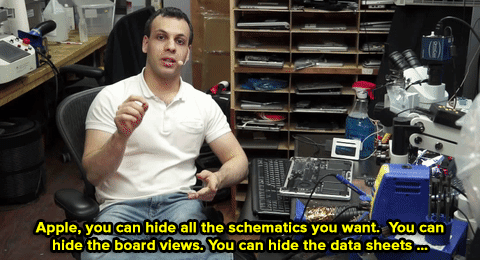
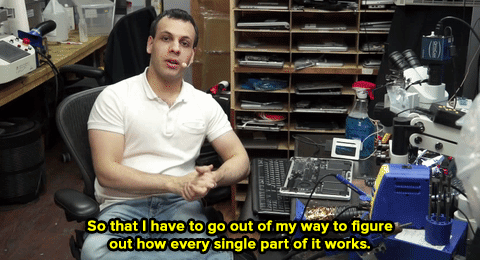
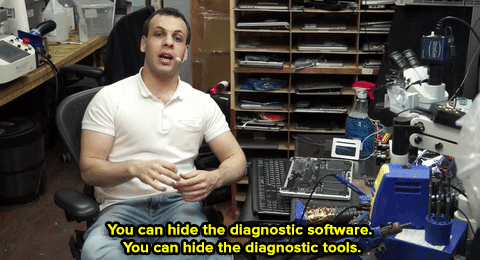

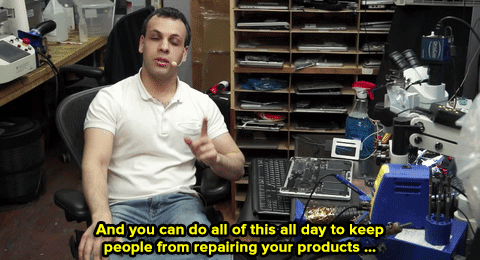
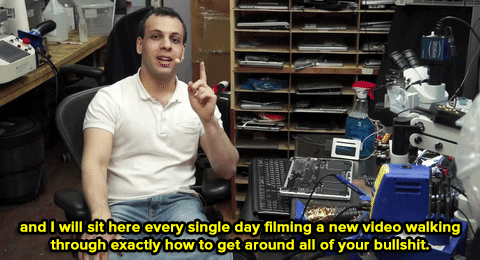
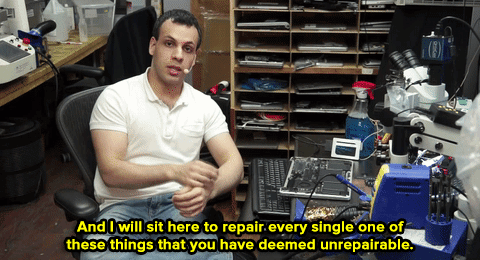
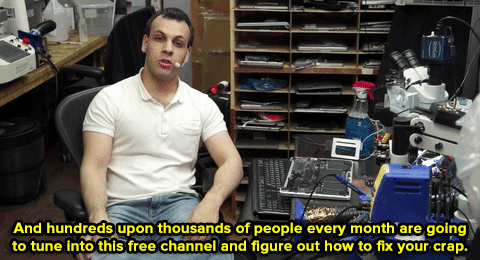
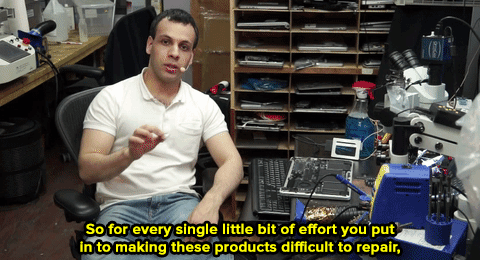
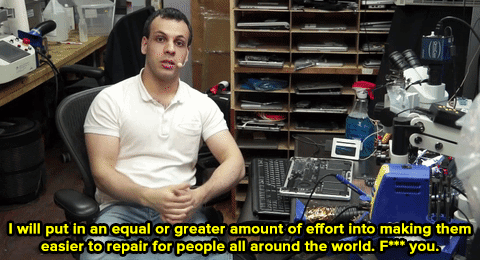
That’s Louis Rossman, a repair technician and YouTuber, who went viral recently for railing against Apple. Apple purposely charges a lot for repairs and you either have to pay up or buy a new device. That’s because Apple withholds necessary tools and information from outside repair shops. And to think, we were just so close to change.
Follow @the-future-now
Genuinely considering starting a business where I do what I can to repair people's phones for a MUCH cheaper price than the actual companies charge you. I HATE intentional obscurity and the lack of right to repair with a burning passion, and I've been slowly accumulating the proper tools and knowledge to open up phones from 2018 and up and repair any hardware issues I might find. Software is where the idea gets a bit more complicated, but there must be SOMETHING that can be done to keep an older ("older") phone running at a decent capacity (any tips/methods are WELCOME please and thank you) but yeah. Saving for college or else I'd do it for free, but yeah, I think it'd be a good service to provide. I'm an engineering/robotics kid, so I'm familiar enough with tech to do a good job, especially after all the experimental repairs I've done on old phones for friends and family or discarded phones I collected. Any advice is welcome.
I see @foone has switched from reblogging deer girls… to reblogging John Deere girls. 🙂
Imagine the frustration of trying to do maintenance on your robot gf only to find out her wiring diagrams, code, and repair manual are considered confidential and proprietary and only factory certified technicians are allowed or able to work on her. Now imagine working tirelessly to build a wiring diagram, reverse engineer her code, and documenting troubleshooting and maintenance procedures
Gave the middle finger to Microsoft, its pushing of Windows 11, generative AI and all of the e-waste they're creating simply because older machines can't support the pure shite they're pushing, and installed Linux Mint.
Decided as well that there was definitely still life in my seven year old laptop and got a hold of a new battery from the manufacturer (I enjoyed the "this is quite an old model..." from the support line person).
Happy to report that the old girl's running like a dream now!
Loved all of the learning and unexpected good that came out of it.
I learned lots of new things, like the basics of Linux, how to flash a USB stick, how to open up my laptop with a screwdriver and a few guitar picks and how to replace an internal battery.
I connected with tech savvy friends for their advice and opinions, got excited with others about doing the same thing or getting into similar projects, used my local library to take out a book on Linux and borrowed a mini-screwdriver off of a colleague, who I'm in chats with now about laptop repair.
All this is to say, save your stuff from the wasteful destiny that's planned for it!